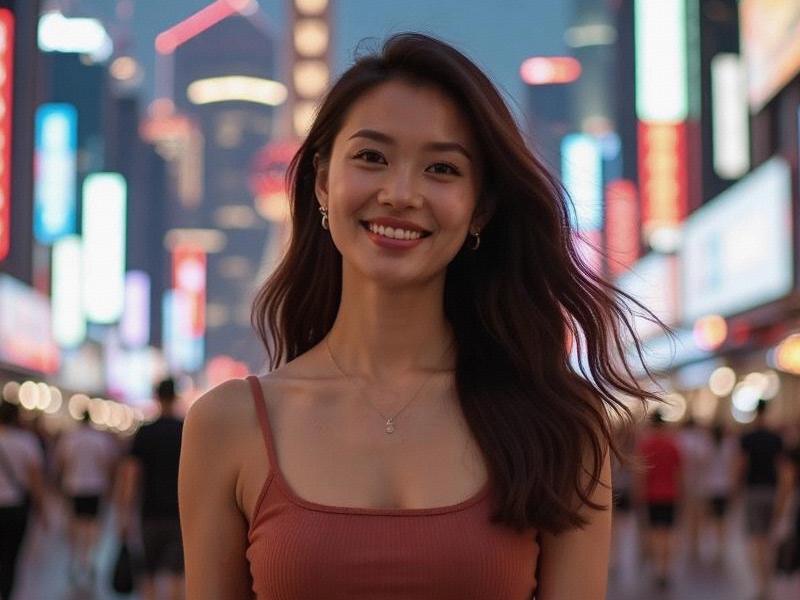This 2,800-word investigative feature explores how Shanghai women are redefining beauty norms by blending international influences with distinctive local traditions in China's most cosmopolitan city.

The Shanghai Beauty Paradox: How China's Global City Creates Its Own Aesthetic Rules
Introduction: The Shanghai Look
Walking through Xintiandi's cobblestone streets, one immediately notices the distinctive Shanghai style - where cheongsam-clad matriarchs sip tea beside Gen-Z fashion influencers sporting avant-garde streetwear. This visual juxtaposition reveals Shanghai's unique position in global beauty culture: simultaneously embracing and resisting international trends while maintaining strong local identity.
Section 1: Historical Foundations
1.1 The Golden Era (1920s-1940s)
- The "Shanghai Girl" calendar art phenomenon
- Hybrid styles blending qipao with Western flapper fashion
- China's first cosmetic counters on Nanjing Road
- White Jade skincare rituals from elite households
1.2 Socialist Transformation (1950s-1970s)
- Rejection of bourgeois beauty standards
- The "Iron Girl" aesthetic of Mao era
- Homemade beauty solutions using limited resources
- Subtle resistance through hairstyle variations
1.3 Reform and Opening (1980s-2000s)
- Permed hair and bold makeup as status symbols
上海龙凤419杨浦 - Japanese and Korean beauty influences
- Emergence of domestic cosmetic brands
- Beauty pageants returning to public view
Section 2: The Modern Beauty Ecosystem
2.1 Skincare Sophistication
- 38% of China's cosmetic R&D happens in Shanghai
- High-tech diagnostics in department stores
- Traditional Chinese Medicine meets lab science
- The "glass skin" obsession and its local adaptation
2.2 Fashion Innovation
- Local designers reinventing cheongsam for modern life
- Sustainable fashion movements gaining traction
- Digital wardrobe planning services
- Mixing luxury items with vintage finds
2.3 Digital Beauty Culture
- Shanghai-based influencers setting national trends
上海私人品茶 - Livestream commerce revolutionizing product launches
- AR makeup try-on technologies
- The paradox of filtered perfection vs. authenticity movements
Section 3: Cultural Contradictions
3.1 Global vs. Local
- Western cosmetic surgery vs. TCM facial gua sha
- International luxury brands vs. revived local perfumeries
- Fast fashion vs. slow tailoring traditions
3.2 Commercial vs. Authentic
- Pressure to conform vs. "bare face" confidence
- Social media illusions vs. real street style
- Corporate beauty standards vs. indie subcultures
3.3 Youth vs. Maturity
- Teen-focused marketing vs. silver-haired icons
- Anti-aging industry vs. graceful aging advocates
- K-pop influences vs. Shanghai-style sophistication
上海品茶工作室
Section 4: The Business of Beauty
4.1 Economic Powerhouse
- $5.8 billion annual beauty market
- 62% of premium cosmetic purchases in China
- Flagship stores as tourist destinations
- Manufacturing innovations in packaging and formulas
4.2 Female Entrepreneurship
- 73% of beauty startups founded by women
- Incubators supporting female-led innovation
- Venture capital specifically targeting women's beauty tech
4.3 Education Revolution
- China's first cosmetology degree programs
- Vocational schools training next-generation experts
- International exchange programs with Paris and Milan
Conclusion: The Future Face of Shanghai
As Shanghai positions itself as a global beauty capital, its women continue crafting a distinctive aesthetic language - not through blind imitation of Western or Asian trends, but through intelligent synthesis and cultural confidence. The Shanghai look remains instantly recognizable yet constantly evolving, proving that in the world of beauty, this city writes its own rules.